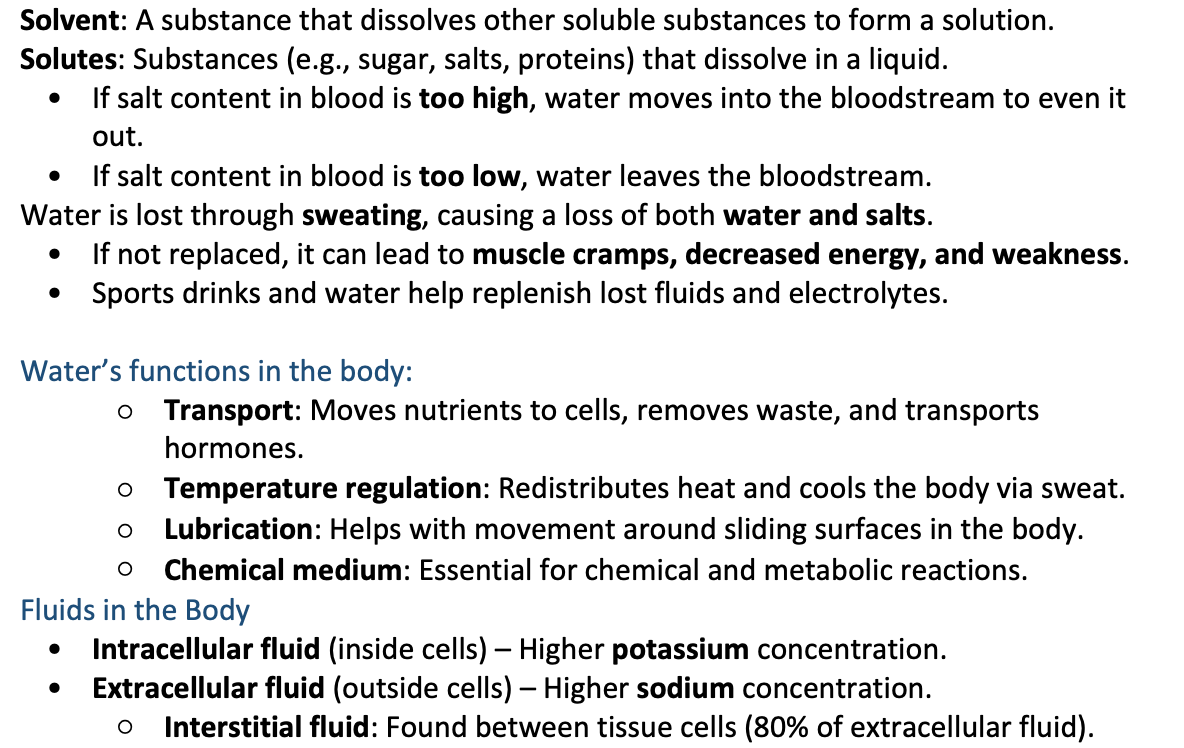Water in the Body
Solvent: A substance that dissolves other soluble substances to form a solution.
Solutes: Substances (e.g., sugar, salts, proteins) that dissolve in a liquid.
If salt content in blood is too high, water moves into the bloodstream to even it out.
If salt content in blood is too low, water leaves the bloodstream.
Water is lost through sweating, causing a loss of both water and salts.
If not replaced, it can lead to muscle cramps, decreased energy, and weakness.
Sports drinks and water help replenish lost fluids and electrolytes.
Water’s functions in the body:
Transport: Moves nutrients to cells, removes waste, and transports hormones.
Temperature regulation: Redistributes heat and cools the body via sweat.
Lubrication: Helps with movement around sliding surfaces in the body.
Chemical medium: Essential for chemical and metabolic reactions.
Fluids in the Body
Intracellular fluid (inside cells) – Higher potassium concentration.
Extracellular fluid (outside cells) – Higher sodium concentration.
Interstitial fluid: Found between tissue cells (80% of extracellular fluid).
